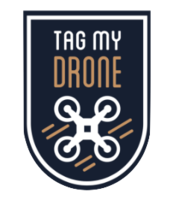If you’re flying drone(s) in USA or Canada, it is very important you give considerations to the newly stated rules and regulations for safety. In an effort to enhance the safety of public drone flying, and encourage economic growth in the drone sector of both countries, the Federal Aviation Administration (FAA) and Transport Canada (TC) designed rules and regulations to govern drones piloting in USA and Canada, respectively. Whether you’re flying drone(s) for research purpose, work or fun, it is very essential that you obey these new rules and regulations, where failure to do so often attracts fine.
In 2019, FAA announced new rules mandating the labelling of outer part of drones with FAA registration number and carrying proof of registration. These new rules also cover certain controlled circumstances that’ll allow drones to fly at night, and over multitudes of people in USA. TC, with its desire to enhance safety in public drones piloting also announced new rules and regulations mandating the labelling of drones with registration number and carrying their proof of registration. TC’s new rules are designed for all drone pilots flying 250 gram to 35 kg drone, and operating within the pilot’s sight. The implementation of these new rules started on June 1st 2019.
USA Latest Safety Rules and Regulations for Flying Drone
The FAA announced its drone flying rules and regulations to minimize risks associated to piloting drones. If you’re flying a drone for recreational or business purpose, it is a must to follow the new rules and regulations, which can be broken down as follows:
FAA Drone Labels
Before you can fly an unmanned aircraft system in USA, it must be registered with FAA. Upon registration, FAA would provide a unique registration number, which has to be displayed on the outer part of the drone. This labelling is very important as that’s the easiest way to show that the drone has been appropriately registered and approved to fly.

Carrying proof of registration
Upon registering your drone, you’ll be issued a proof of registration by FAA, which must be kept intact, and carried along by the pilot at all times.
Pilot Certificate
If you’re flying drone(s) for business purposes (part 107) in the US, you’re required to take a pilot certification test. Upon passing this test, you’ll be issued a drone pilot certificate. This test is only required when flying drone(s) for business and not recreational purposes.

Altitude
Pilots are required to fly a drone at or below an altitude of 400 feet above ground level, which ensures that drone(s) stay within visual-line-of-sight.
Airspace restriction
You must not fly your drone in restricted areas. Except otherwise stated, you may not fly your drone over groups of people, in an airport or over a stadium. Also, you’re not allowed to fly your drone near any emergency response efforts.
Speed
The maximum allowed speed of flight for a drone is 100 mph.
Canada New Safety Rules and Regulations for Flying Drone
The regulations announced by TC to fly drones in Canada targets both advanced and basic piloting of drones. This operation categorization was done on basis of the distance from bystanders and airspace rules. The new rules can be broken down as follows:
Transport Canada Drone Labels
Before you pilot a drone, you must register the drone with the transportation department, where the drone would be given a unique registration number. The registration number given must be marked/labelled on the outer part of the drone. This is very important as that’s the easiest way to show that your drone has been registered and approved to fly.
Carrying proof of registration
When you register your drone with TC, you’ll certainly be given proof of registration to show the registration is genuine. Whenever you want to fly your drone, you must always have this proof with you, even after inscribing TC registration number on the drone.
Pilot certificate
For you to operate a drone for both basic and advanced purposes, you’re required to pass an online exam on drone piloting and get a pilot certificate. This would certify that you have the right knowledge to fly a drone, even in a public place. Prior to the exam, you can enroll in a drone flight school to acquire all the knowledge required to pass the exam.
Age
The new regulation also covers the minimum age required of a person to fly drone(s). For basic operations, the pilot must be of a minimum age of 14, while for advanced operations, the pilot must be of a minimum age of 16. If at all the pilot is under these required ages, he/she must be supervised by a certified drone pilot.
Altitude
Every drone pilot is required to fly their drone below an attitude of 400 feet above ground level. This altitude is considered as the maximum visual-line-of-sight of an average person, which is why drones are not to be flown above that level. While flying a drone, it is also required of the pilot to stay away from air traffic.
Conclusion
For safety advancement in the drone sector of USA and Canada, FAA and TC have announced new rules and regulations to fly drones. Regardless of the purpose which you’re flying drone(s), it is important you obey all the rules and regulations listed in this article.

